Walk past Benaki Museum up Koumbari Street (or follow Kanari Street starting from Academias street) and you’ll find yourself in Kolonaki square, the centre of town. Officially called Platia Filikis Eterias (Friendly Society Square), it is unofficially known for its chic boutiques, society kids, overpriced coffee and preferred residence of the upper class. Kolonaki (means little column) was named after a small ancient column still standing in the middle of the square.
Culture in Kolonaki revolves around its impressive museums and contemporary galleries, housing the top of the crop in artists both Greek and foreign.
Benaki Museum
 The private museum in the city’s chic neighbourhood of Kolonaki is housed in a beautiful 19th century neo-classical mansion, donated by Greek benefactor Antonis Benakis. The first floor is dedicated to Palaeolithic and Bronze Ages, the Cycladic, Mycenaean and classical era. There is a vast collection of tools, marble vessels, golden jewellery and painted pottery, glassware, ceramics, funerary stele, murals, Fayum portraits, as well as a large collection of roman statues. Don’t miss the Fayum “Portrait of a Young Man”. It’s an expressive portrait of a male form from Antinoopoli of Egypt, painted with the encaustic method on linen. It dates from the 3rd century CE and many components of the new wave in Greek painting have their roots in it. Another important painting is Theodoros Vyzakis’s painting “The Oath at Agia Lavra” (1851), a work of historic significance, whose composition marks a myth surrounding the beginning of the War for Independence in Kalavrita on the 25th of March 1821.
The private museum in the city’s chic neighbourhood of Kolonaki is housed in a beautiful 19th century neo-classical mansion, donated by Greek benefactor Antonis Benakis. The first floor is dedicated to Palaeolithic and Bronze Ages, the Cycladic, Mycenaean and classical era. There is a vast collection of tools, marble vessels, golden jewellery and painted pottery, glassware, ceramics, funerary stele, murals, Fayum portraits, as well as a large collection of roman statues. Don’t miss the Fayum “Portrait of a Young Man”. It’s an expressive portrait of a male form from Antinoopoli of Egypt, painted with the encaustic method on linen. It dates from the 3rd century CE and many components of the new wave in Greek painting have their roots in it. Another important painting is Theodoros Vyzakis’s painting “The Oath at Agia Lavra” (1851), a work of historic significance, whose composition marks a myth surrounding the beginning of the War for Independence in Kalavrita on the 25th of March 1821.
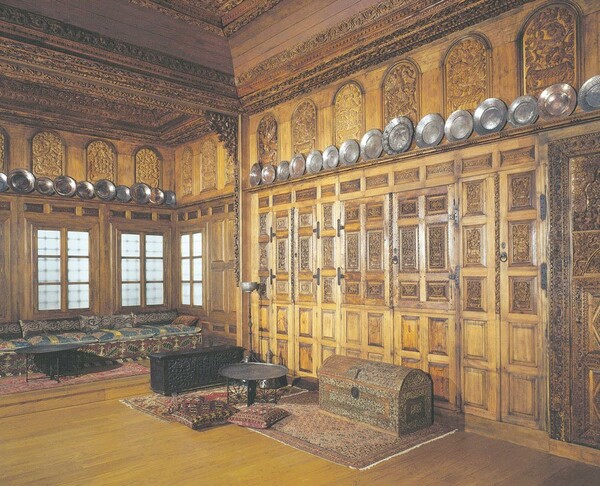
There is an excellent collection of Byzantine icons and mosaics as well as beautifully knitted religious fabrics. The first floor offers a glimpse of 17th-18th century Greece, with a collection of traditional festive and bridal attires, embroideries, jewellery, woodwork and items of daily use from Crete, the Dodecanese, Cyclades and Cyprus. The wooden Cretan loom is a masterpiece, as well as the wooden chests and the intricate golden jewellery. Don’t miss the reconstructions of the interiors of the houses of regional noblemen from the 18th century. The second floor showcases musical instruments and books, while the third is dedicated to post-revolutionary (post-1821) Greece. There are manuscripts by poets such as Dionysios Solomos, paintings, furniture, personal items of revolutionary figures and philhellenes like Lord Byron and items of the first royal families to rule Greece. You can also find a selection of paintings by famous 20th century Greek painters like Nikos Eggonopoulos, as well as personal items of Nobel Prize-winners George Seferis and Odysseas Elytis.
The museum has two more annexes: The modern art division at Pireos Street and the Islamic Museum in Kerameikos (see descriptions below).
Pieces from the museum’s vast collection that covers a large swathe of Greek history


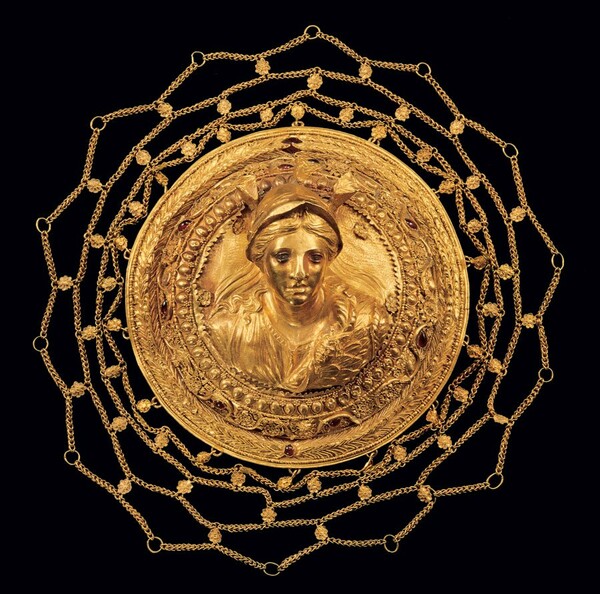
- 1 Koumbari, Kolonaki, Tel: +30 210 3671000, Wed, Fri 09:00-17:00, Thu, Sat 09:00-24:00, Sun 09:0-15:00, closed Mon, Tue / www.benaki.gr / Ticket: €7, temporary exhibitions: €5 / Metro: Syntagma
Museum of Cycladic Art (MCA)
 As its name suggest, this museum showcases the largest collection of the gorgeous white marble figurines of Cycladic Art, which have influenced modern sculptors with their grace, abstractive form and sleek surface. Most of them were discovered in tombs but their meaning is still debated. These figurines are mostly female, have their hands crossed in front of them and slightly bended knees. The seated figure raising its cup in toast is of exemplary technique, as well as the violin-shaped representing body shapes in the third millennium BC. Other displays show the marble vessels and basins used for religious and everyday activities. On the second floor you’ll find artefacts from Mycenae up until the Roman era: Hydrias, glass vessels for oils, golden objects and amphorae from Attica. The third floor houses temporary exhibitions, while the fourth floor presents the Karolos Politis collection, a rich selection of about 120 artefacts covering all periods of Greek art until the 6th century AC. The collection includes vessels, clay pottery, and beautiful bronze helmets. After your tour, don’t forget to visit the gift shop with its beautiful replicas of the iconic Cycladic figurines.
As its name suggest, this museum showcases the largest collection of the gorgeous white marble figurines of Cycladic Art, which have influenced modern sculptors with their grace, abstractive form and sleek surface. Most of them were discovered in tombs but their meaning is still debated. These figurines are mostly female, have their hands crossed in front of them and slightly bended knees. The seated figure raising its cup in toast is of exemplary technique, as well as the violin-shaped representing body shapes in the third millennium BC. Other displays show the marble vessels and basins used for religious and everyday activities. On the second floor you’ll find artefacts from Mycenae up until the Roman era: Hydrias, glass vessels for oils, golden objects and amphorae from Attica. The third floor houses temporary exhibitions, while the fourth floor presents the Karolos Politis collection, a rich selection of about 120 artefacts covering all periods of Greek art until the 6th century AC. The collection includes vessels, clay pottery, and beautiful bronze helmets. After your tour, don’t forget to visit the gift shop with its beautiful replicas of the iconic Cycladic figurines.
- 4 Neofytou Douka street, Kolonaki, Tel: +30 210 7228321 / Hrs: Mon, Wed, Fri, Sat 10:00-17:00, Thu 10:00-20:00, Sun 11:00-17:00, Tues closed / Ticket: €7, on Monday €3.5 / www.cycladic.gr / Metro: Syntagma, Evangelismos
Nikos Hadjikyriakos-Gkika Gallery
The prominent cubist painter, sculptor, etcher, illustrator and academic Nikos Hadjikyriakos-Gkikas (1906-1994) is considered one of the most important Greek artists to date. Influenced by the Parisian avant-garde, the artist prefered simple forms and attempted in numerous paintings to deconstruct the Greek landscape into geometric shapes. Works of Hadjikyriakos –Gkikas have been sold in private art collections and are housed is museums around the world, like Tate Gallery in London, Musee d’art moderne in Paris and the Museum of Modern Art in New York.
The gallery is the house and workshop where the artist lived and worked for almost 40 years and displays works by both him and other Greek artists of the interwar period, providing a rare glimpse of the artistic output of the time.
In the mid 1950s the painter decided to move into the Kriezotou building, which belonged to his family, and occupied the fourth floor. The specious fifth floor was transformed into his personal studio where easels and painting supplies are scattered around the room together with artefacts he brought back from his travels.
Starting from the large, iron entrance, the visitor enters the a drawing room in the ground floor which contains works by French painters like Signac, Vlaminck, Utrillo, books and sculptures of prominent Greek artists of his time and furniture dating back to the 16th-18th centuries.
The second and third floors display an exemplery collection of the intellectual and artistic output of Greece during the interwar years and until the eve of the 1967 dictatorship. Through works of art, manuscripts, publications, photographs and personal artefacts belonging to 201 artists and intellectuals, visitors share the world of ideas in Greece through the eyes of the so-called Thirties Generation as well as artists of the second half of the twentieth century.
The fourth floor, preserved in its initial form, familiarises visitors with the artist’s personal living space: the living room with its fireplace, the family portraits, his collection of perfume bottles and the dining room. The fifth floor houses his light-filled studio, an area the artist modelled himself by painting the bricks and where he placed one more library with art books and his collection of walking sticks.
Visitors can also use a multimedia application, entitled Nikos Hatzikyriakos-Ghika and the Thirties Generation, designed by the Benaki Museum, which contains the bulk of his works and provides information about the artist’s life and work both in Greece and in Europe. The library contains rare illustrated editions and more than 7,000 volumes mainly on art history, as well as the artist’s photography archive.
In 1991, the artist donated his own art collection to Benaki Museum, along with his house on Kriezotou Street. The artist himself organised his house into a gallery and the rooms visitors see today are exactly as he left them. The building, a typical example of an interwar apartment block, was designed by the architect Kostas Kitsikis and was included in many architectural publications of the time.
The building functioned as an annexe to the museum from 1991-2000, when it closed for maintenance. It re-opened its doors in late 2012.
- 3 Kriezotou Street, Kolonaki, Tel: +30 210 3630818 / Hrs: Wed-Sun 10:00-18:00, closed Mon, Tue, also closed in August, tickets: €7 / Metro: Syntagma
Byzantine & Christian museum
 One of the most impressive collections of Byzantine and post-Byzantine era artwork is stored in the Byzantine Museum. Its aim is to acquire, save, conserve, record and showcase objects of early Christian, Byzantine, Medieval and modern religious art. Its 25,000 objects date from the 3rd until the 20th centuries CE and originate from Greece, Asia Minor and the Balkans. Collections include among others, sculptures, icons, wall-paintings, ceramics, textiles, manuscripts, drawings and chalcography. Some of the most spectacular objects are the icons and the textiles, most of which are of unparallel craftsmanship, like the 13th century Madonna Glykofilousa (Sweet kisser) and the silk religious frock worn by priests in the 17th century. Continue to the manuscript section and admire the beautiful scrolls, Holy Bibles and the rare Etymologikon (Grammar book) from the early 18th century. The famous icon of “Archangel Michael” (14th century) represents dedication in classical tradition. The exquisite quality of art reveals close link to the Instanbul’s workshops of the first half of the 4th century. The museum also holds the Loverdos collection with its 660 religious artifacts for conservation and indefinite keeping. Don’t miss the photographic exhibition that testifies to the original architectural design of old churches that have since been remodeled or rebuilt.
One of the most impressive collections of Byzantine and post-Byzantine era artwork is stored in the Byzantine Museum. Its aim is to acquire, save, conserve, record and showcase objects of early Christian, Byzantine, Medieval and modern religious art. Its 25,000 objects date from the 3rd until the 20th centuries CE and originate from Greece, Asia Minor and the Balkans. Collections include among others, sculptures, icons, wall-paintings, ceramics, textiles, manuscripts, drawings and chalcography. Some of the most spectacular objects are the icons and the textiles, most of which are of unparallel craftsmanship, like the 13th century Madonna Glykofilousa (Sweet kisser) and the silk religious frock worn by priests in the 17th century. Continue to the manuscript section and admire the beautiful scrolls, Holy Bibles and the rare Etymologikon (Grammar book) from the early 18th century. The famous icon of “Archangel Michael” (14th century) represents dedication in classical tradition. The exquisite quality of art reveals close link to the Instanbul’s workshops of the first half of the 4th century. The museum also holds the Loverdos collection with its 660 religious artifacts for conservation and indefinite keeping. Don’t miss the photographic exhibition that testifies to the original architectural design of old churches that have since been remodeled or rebuilt.
- 22 Vasilisis Sofias, Kolonaki, Tel: +30 210 7294926 / Hrs: Tue-Sun 09:00-18:00, tickets: €4 for temporary exhibition / Metro: Evangelismos.
National Museum of Contemporary Art (NMCA)
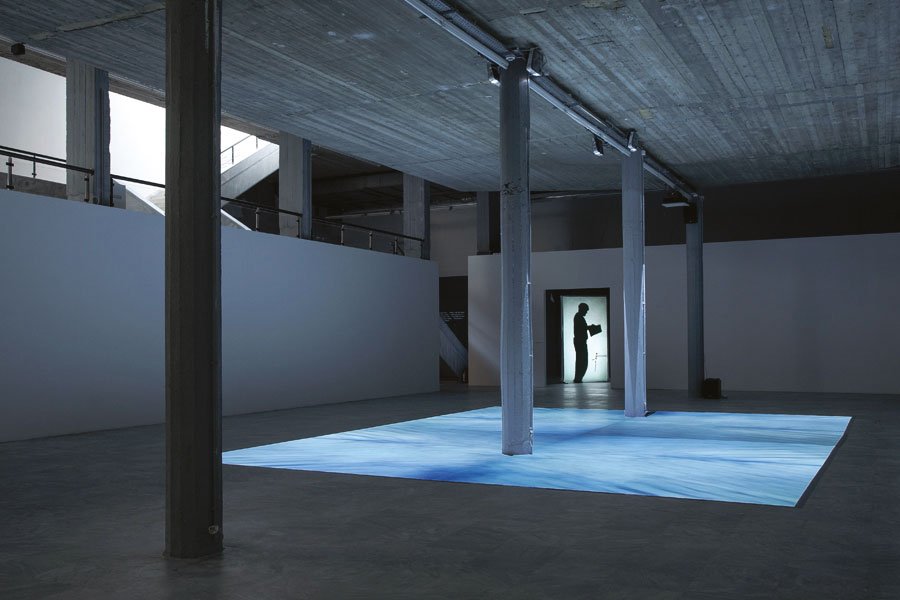
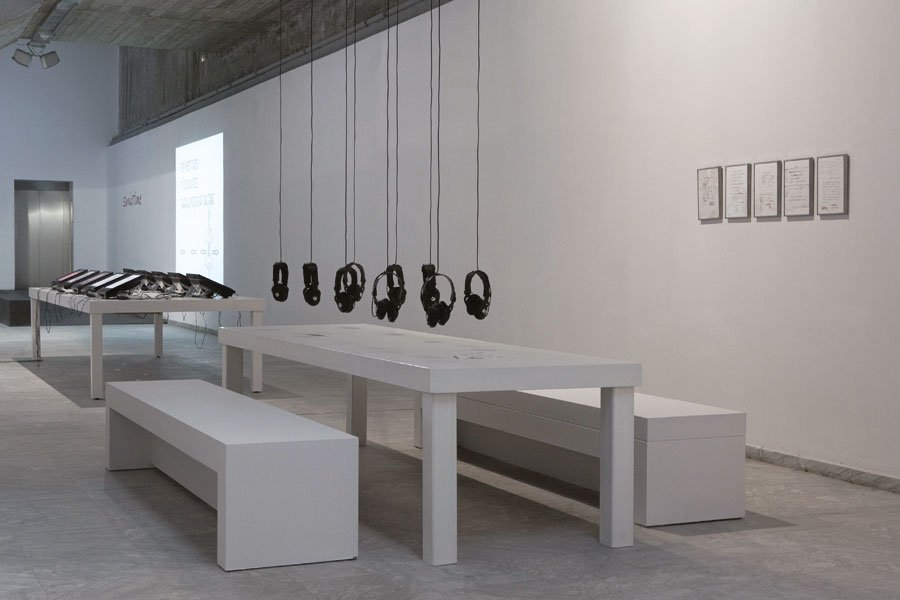 The demand for a museum of contemporary art in Athens had been pressing for decades and the newly established National Museum of Contemporary Art (NMCA) is trying to catch up on lost time. As its permanent home is being constructed (the old Fix brewery in Makriyanni) it is now housed in the Athens Conservatory’s premises, hosting exhibitions of Greek and international artists. To make up for the lack of permanent collection, NMCA organises many shows during the year. Presently it hosts the exhibition Hybrid Stories, from the EMST collection, consisting of 14 works of video art and film by acclaimed artists such as Robert Wilson, Rebecca Horn, Gary Hill and Jean –Luc Godard, among others (until 15/9/13).
The demand for a museum of contemporary art in Athens had been pressing for decades and the newly established National Museum of Contemporary Art (NMCA) is trying to catch up on lost time. As its permanent home is being constructed (the old Fix brewery in Makriyanni) it is now housed in the Athens Conservatory’s premises, hosting exhibitions of Greek and international artists. To make up for the lack of permanent collection, NMCA organises many shows during the year. Presently it hosts the exhibition Hybrid Stories, from the EMST collection, consisting of 14 works of video art and film by acclaimed artists such as Robert Wilson, Rebecca Horn, Gary Hill and Jean –Luc Godard, among others (until 15/9/13).
- Temporary address: Athens Conservatory, 17-19 Vasileos Georgiou & Rigillis (entrance Rigillis), Tel: +30 210 9242111 / Hours: Tue-Sun 11:00-19:00, Thu 11:00-22:00, Mon closed / Τickets: €3, Thu free from 17:00-22:00, exhibitions in media lounge free / www.emst.gr / Metro: Evangelismos


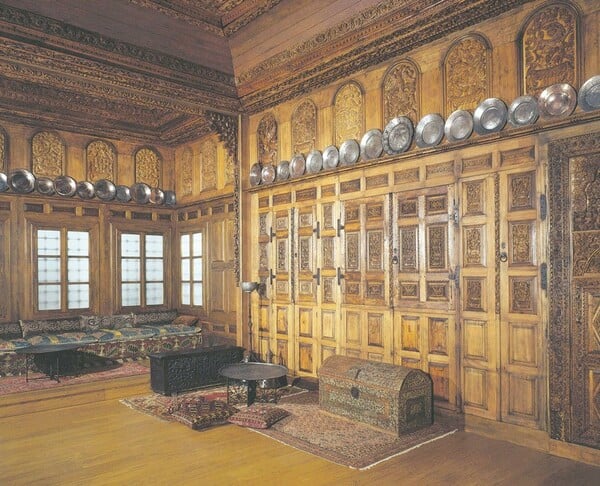







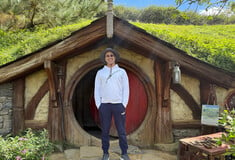
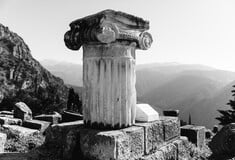

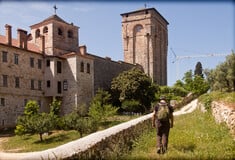




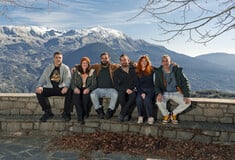



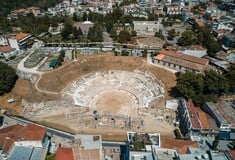
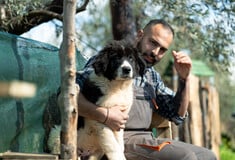

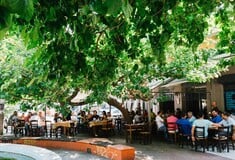




σχόλια